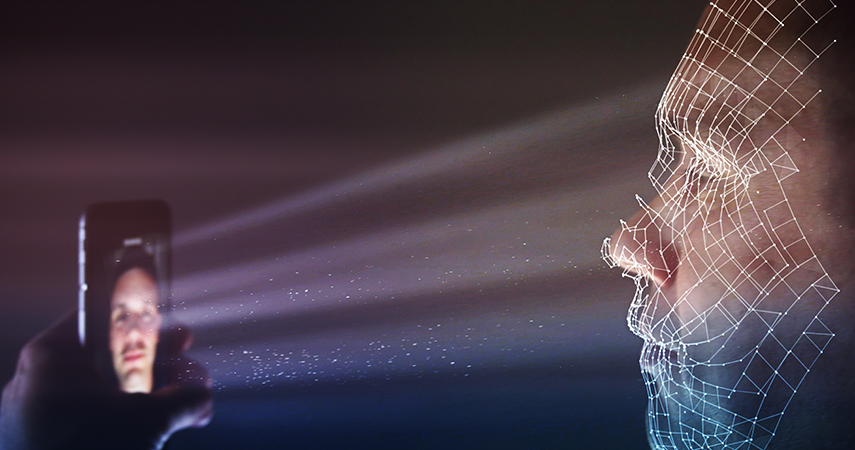Securing the new tide of biometric authentication tools

David Higgins, EMEA technical director at CyberArk, discusses the increasing prevalence of biometric authentication tools and the steps needed to use them securely
Biometric fingerprint readers, facial recognition systems, and retinal scanners were once reserved for the likes of Tom Cruise and James Bond in their respective ‘secret agent’ film franchises. In order to penetrate a heavily-fortified and high-tech facility, Cruise would take on an impossible mission and, more often than not, resort to neutralising an unknowing guard, pressing the guard’s finger against a scanner (similar to the ones used by airports for e-passports), and slipping into the building entirely unnoticed. But this kind of tech is now more commonly used for breaching the security of iPhones and other mobile devices, as opposed to that of a high-security compound.
In the space of a few years, biometric authentication has quickly become very popular.
This progress has prompted many organisations to explore this technology as a way to protect their sensitive data and to ensure that the right person has access to the right device at the right time.
However, whilst some information security experts believe biometric technology is the future of digital security, others voice growing concerns around privacy. But, before we assess the risks and rewards, here’s an overview.

A brief overview of biometric authentication
To work for identification and access control purposes, biometric markers must be completely unique to an individual, recordable and permanent. Examples of biometric data include a person’s unique facial structure, the minute ridges of a fingerprint, the one-of-a-kind patterned iris encircling a pupil in the eye, the unique sound waves of a person’s voice (or “voiceprint”), the geometry of a hand or the way a person interacts with a computer system (a typing cadence or mouse usage for example). These ‘unique human identities’ are collected, stored and matched in a database, providing a secure way for users to log into a host of devices or systems without having to use (and remember) multiple passwords.
And this isn’t just future-gazing technology. A recent survey conducted by CyberArk among UK office workers revealed that many organisations are beginning to integrate cutting-edge new security technologies into their strategies, with nearly one in five (19%) reporting that their IT security team is experimenting with biometric security techniques, including fingerprint and retinal scans and embedded microchips.
READ MORE: Millions of fingerprints leaked in latest high-profile data breach
DNA is forever, a password is not
This technology has clear benefits, but businesses cannot afford to overlook the plethora of security and privacy concerns that come with implementing biometric authentication.
Firstly, there is a significant difference between a hacker getting their hands on a fingerprint rather than a password – after all, you cannot change your DNA. This leaves your devices vulnerable and exposed. Furthermore, the permanence of biometric authentication could easily lead some individuals and organisations to become overly confident in the technology and focus less on robust cybersecurity best practices such as multi-factor authentication (MFA), needed to thoroughly secure employee devices.
Savvy hackers will – and in many cases are already – trying to exploit biometric technology for digital and physical authentication. According to reports from Motherboard, some hackers have allegedly cracked hacking vein authentication technology by making fake hands out of wax. Whilst this is an extreme and unusual example, this just proves the lengths that hackers are willing to go to, and businesses have to stay one step ahead of the curve to combat all kinds of threats.

Beware hacks of all shapes and sizes
Here are just a few ways attackers are targeting unique human identities to gather massive amounts of biometric data for future modelling purposes and nefarious use:
Genetic consumer services
If you’ve ever taken an at-home DNA test, your unique genetic information is now in the hands of an organisation you probably have limited knowledge of. Last June, genealogy testing service MyHeritage revealed that 92 million accounts were found on a private server. While personal DNA was not compromised in this instance, it demonstrates the potential for far-reaching damage in the case of a successful breach.
Embedded human microchips
According to the biohacking company Dangerous Things, between 50,000 and 100,000 people today sport an embedded microchip, which they use to do things like unlock their office door, get into the gym, buy lunch and simplify travel. Yet, a number of security researchers have demonstrated ways to successfully hack into these chip implants – from infecting a chip with a virus through a SQL injection attack to conduct a URL attack on a browser vulnerability on an NFC chip.
Biometric stores within organisations
As adoption of biometric authentication grows, huge amounts of highly sensitive data are being collected, stored on-premises and in the cloud, processed and accessed with minimal protection or oversight. Cyber attackers are increasingly targeting data stores within organisations, understanding that many have not implemented the appropriate technical and organisational measures needed to keep this sensitive data secure.
Whilst biometric technology is no longer the stuff of science fiction, we do believe it has a long way to go to be implemented at scale across large businesses. We have to stay one step ahead of the hackers and anticipate their ability to hack into biometric technology at any time. Doing this will require robust cybersecurity measures such as MFA. There is more at stake here than just financial and reputational damages and losses to businesses – this is about protecting our unique human identities. It’s time to wise up to the risks that biometric technologies can pose and take the necessary steps to combat them.
